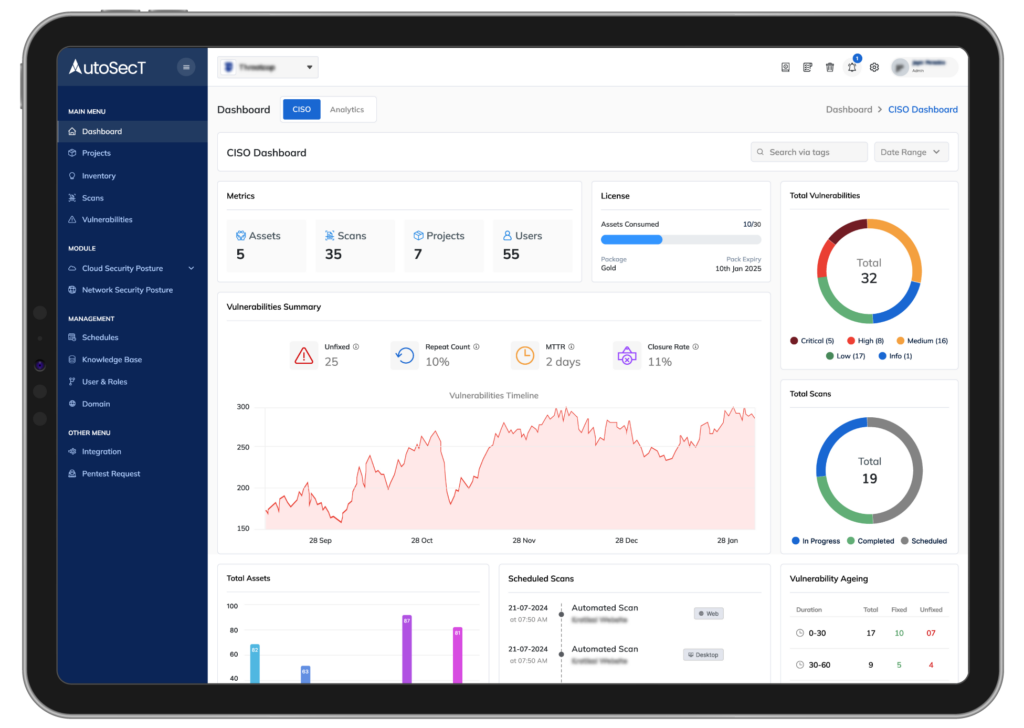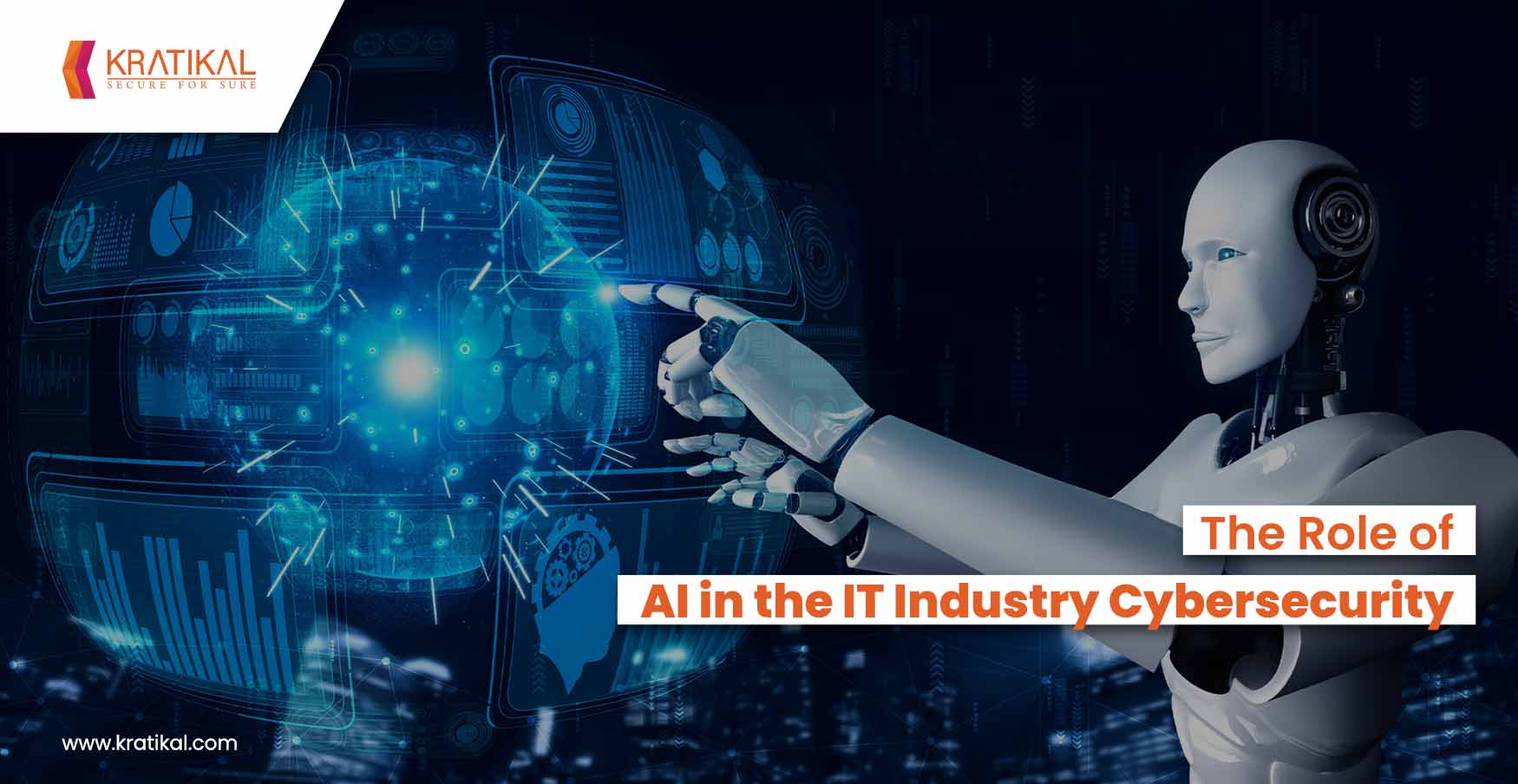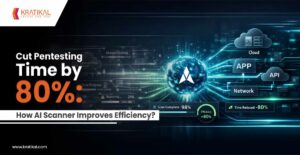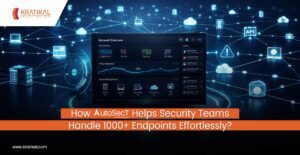AI adoption is surging 53% of organizations expect full or mature AI deployment in security by 2025, up from 47% just a year earlier. The statement itself highlights the acceptance of AI in cybersecurity among organizations. If you are among the group of organziations who are still stuck with the traditional cybersecurity methods, you must read this blog. Especially, in IT industry, most of the functions are operated digitally and with that being said, the probability of an IT industry getting attacked increases manifold. Since not convinced, here is how far the usage of AI in cybersecurity has made security much more effective.
Table of Contents
Key Applications of AI in IT Cybersecurity
AI technologies are being applied to a broad range of cybersecurity use cases. Key applications include:
Intelligent Threat Detection & Anomaly Monitoring:
AI-powered systems analyze massive volumes of traffic, logs, and user behavior to spot attacks in real time. Unlike traditional tools, they learn normal patterns and flag anomalies, enabling earlier detection of new malware or stealthy intrusions.
70% of security professionals find AI highly effective at uncovering threats that were previously missed. By combining supervised learning (known malware) with unsupervised learning (abnormal behavior), AI offers adaptive defense. By 2025, 90% of banks will rely on AI to detect fraud in real time. AI-driven User and Entity Behavior Analytics (UEBA) further reduces insider risks by identifying suspicious deviations from normal activity.
Predictive Analytics & Threat Intelligence:
AI enables security teams to anticipate attacks by analyzing past incidents and global threat feeds. Predictive analytics identifies trends, forecasts likely targets, and assigns risk scores so teams can strengthen defenses in advance.
Today, 43% of organizations already use AI to prevent attacks, moving from reactive response to proactive defense. From AI-based patching recommendations for high-risk asset inventory to updating security rules, AI-driven insights help organizations stay one step ahead of adversaries.
AI-Powered Vulnerability Detection and Analysis:
Modern malware evolves quickly, but AI helps defenders stay ahead. Machine learning models trained on known vulnerabilities can spot new variants, even without signatures. Endpoint security tools like AutoSecT use AI to detect abnormal behavior instead of relying only on signature matching.
In labs, AI speeds up reverse engineering. Google researchers showed an AI model that analyzed WannaCry’s code in just 34 seconds and identified its kill-switch. With millions of new samples each year, AI reduces the burden on analysts and uses deep learning to accurately classify files as safe or malicious before they execute.
Vulnerability Management and Patch Prioritization:
With new vulnerabilities emerging every week, AI helps organizations focus on what matters most. By analyzing scan data, asset details, and exploit intelligence, AI predicts which CVEs are most likely to be weaponized and assigns risk scores based on factors like asset criticality and network exposure.
Benefits of AI-Based Cybersecurity in IT Industry
Adopting AI in IT cybersecurity offers numerous benefits that can strengthen an organization’s overall security posture. Key advantages include:
Improved Threat Detection & Accuracy: AI catches threats traditional tools miss by spotting patterns and anomalies in real time. Research shows that AI in cybersecurity have helped analyze data 50× faster than humans and cut false positives by 30%, reducing alert fatigue. Many companies report higher true-positive rates and fewer irrelevant alerts.
Faster Response & Containment: AI automates detection and incident handling, shrinking breach lifecycles by over 100 days compared to organizations without AI. Reports say that the graph cut detection time reduced from 24 hours to under 1 hour, while over 57% of SOCs using AI saw faster alert resolution and better real-time containment.
Operational Efficiency & Scale: AI handles repetitive tasks like log correlation, triage, and reporting, freeing analysts for complex work. 51% of companies using AI reported higher efficiency and workload management. By analyzing vast data around the clock, AI acts as a “force multiplier,” helping small teams protect large enterprises despite the cybersecurity skills gap.
Adaptive & Proactive Defense: AI learns from data, adapting as threats evolve. It detects new malware by abnormal behavior, incorporates global threat intel, and predicts likely attack targets. 43% of organizations now use AI’s predictive insights to prevent attacks, shifting security from reactive to preventive.
Enhanced Analysis & Decision Support: AI accelerates forensics by correlating logs and building attack timelines in minutes. NLP and LLMs can digest reports, dark web chatter, and alerts into plain-language summaries, giving analysts and executives faster context. AI also ranks incidents by business impact and suggests responses, enabling sharper, data-driven decisions.
Real-World Implementations – AutoSecT

AutoSecT, developed by Kratikal, is an AI-powered VMDR and pentest platform with built-in penetration testing. It unifies scanning across networks, clouds, web apps, mobile apps, and APIs in one dashboard. Designed to overcome the limitations of traditional manual testing, AutoSecT addresses slow processes, fragmented tools, and the flood of false positives that often overwhelm IT security teams. By offering continuous, automated scanning and real-time risk detection, it delivers a proactive and compliance-ready approach to vulnerability management.
AI-Driven Capabilities for Proactive Threat Mitigation
AutoSecT leverages AI and automation to detect, validate, and prioritize vulnerabilities as they emerge. Its AI engine simulates real-world exploits to confirm which issues are truly dangerous, filtering out false positives so teams focus only on actionable threats. With risk-based prioritization, it ranks vulnerabilities by severity, business impact, and likelihood of attack, helping organizations address the most critical weaknesses first. This transforms vulnerability management from a reactive task into a predictive, proactive defense strategy.
Role in Cybersecurity Ecosystem and IT Leadership Value
AutoSecT bridges the gap between basic scanners and manual penetration testing, combining speed with expert-level accuracy. As the first RAG-powered “AI-agentic” network vulnerability scanner, it delivers continuous testing with near-zero false positives, integrating seamlessly into DevSecOps workflows with tools like Jira, Slack, Google Chat and Teams. For IT leaders and CISOs, it provides complete visibility, compliance-ready reporting, and a measurable way to align security with business priorities. By reducing noise, improving accuracy, and enabling faster remediation, AutoSecT empowers organizations to stay ahead of threats while strengthening resilience and compliance.
Insights from Government and Standards Bodies
Guidance from NIST, CISA, and international bodies urges companies to adopt AI in cybersecurity with a measured, risk-informed approach; leveraging its defensive power while addressing new risks through standards, testing, and training.
NIST (National Institute of Standards and Technology)
In 2023, NIST released its AI Risk Management Framework to help organizations balance AI’s benefits with risks. NIST highlights AI’s potential for stronger threat hunting and analytics but warns of challenges like transparency, data dependence, and new skill requirements. Their guidance stresses that AI should be “explainable and interpretable” for trust and accountability. NIST is also studying adversarial AI, publishing a taxonomy of attacks and mitigations, and updating its NICE Workforce Framework to add AI-related skills.
CISA (Cybersecurity and Infrastructure Security Agency)
In late 2023, CISA launched its first Roadmap for AI in Cybersecurity, aiming to both harness AI for stronger defenses and reduce risks of AI misuse. CISA is piloting AI tools to secure federal networks, collaborating with NIST on secure AI development, and creating a dedicated AI team to share threat intelligence with industry.
International and Other Bodies
Globally, agencies like ENISA (EU) and ISO/IEC are publishing AI security recommendations and standards, while governments in the U.S., UK, and others are funding AI and cybersecurity education to close the skills gap. Public-sector experts broadly agree: AI will shape both offense and defense, requiring shared norms, ethical guardrails, and public-private collaboration to ensure secure adoption.
FAQs
- How is AI transforming cybersecurity in the IT industry?
AI enables faster threat detection, predictive analytics, and automation. By 2025, 53% of organizations will have mature AI deployment in cybersecurity.
- What are the key benefits of AI in IT cybersecurity?
AI improves detection accuracy, speeds up response, reduces false positives by 30%, and shortens breach lifecycles by over 100 days, boosting efficiency.
- What role does AutoSecT play in AI-powered cybersecurity?
AutoSecT is an AI-driven VMDR and pentesting platform offering continuous scanning, real-time risk detection, and near-zero false positives with multi-integration.









Leave a comment
Your email address will not be published. Required fields are marked *